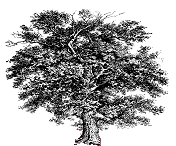



|
|
 |
|
APRIL
COVNA MEETING PROGRAM NOTES Mr. Allgeier, a developer from Burdock Companies, will speak at this meeting. Burdock Companies plans to build Heritage Oak Hill, 9000 Manchaca Road, next to the Southwest Church of Christ. This complex will be a seniors apartment community comprised of approximately 96 units, of which 80% will target tenants with approximate incomes less than the area median. If awarded, this development would be ready for occupancy by approximately August 2012. Please come to the meeting to find out more information about this project and ask any questions you might have. |
|
MEMBERSHIP DRIVE A SUCCESS |
|
||||
| To
join the COVNA Email List, click below and Find out the latest neighborhood news and
developments. |
2011 MEETING SCHEDULE
|
Advertise in the COVNA Newsletter Only $10.00/month. Reaches over 400 homes & Online at COVNA.org Email Hal Ferguson at: hferguson3@yahoo.com |
| |
|
PRESIDENT'S MESSAGE By all accounts, the second annual COVNA Neighborhood-Wide Garage Sale was a success. I hope everyone who participated made lots of money and cleaned out their garages. Special thanks go to Tom Bray who made and erected the signs that directed people into the neighborhood. Thanks also to Jennifer Rizkalla who helped get permission from folks to put the signs up. Based on the response so far, I think the Garage Sale will be an annual April event. Our next COVNA meeting will be Monday, April 18 at 7 p.m. If you are on the COVNA email list, you are aware that the property at 8922 Manchaca Rd. is slated for development as an apartment complex for retirees. This is the property directly south of the Church of Christ Southwest where we have our meetings. The property abuts the corner of Comburg Castle Way and Comburg Dr. in the northeast corner of the neighborhood. The owner of the development is scheduled to attend the meeting to present information about the development and answer any questions we may have. I encourage you to attend this meeting if you have any questions or concerns about the development and the possibility of extending Comburg Castle Way. At the meeting, we will also do a debrief on the garage sale and highlight dates on the COVNA calendar for the remainder of 2011. I hope to see you there. |
SPEAK UP AUSTIN 2011 Camp Scholarship for Aquatic Science Adventure Camp The City of Austin has launched a new online service
to enhance community engagement and provide a forum for residents to offer
suggestions on how to improve the way the City does business. The new
Web portal, www.speakupaustin.org,
is a moderated online discussion forum where residents can offer ideas
and comment or vote on the ideas provided by others. The website enables
users to contribute ideas on any subject, by answering the question, “How
can you make it better?” Users can suggest a new service, a service improvement, a policy change or other recommendation. It also invites users to visit subject-specific forums on topics the City is currently exploring. The Communications and Public Information Office will provide oversight to ensure comments remain civil, as would a facilitator at an in-person meeting. |
 |
 |

|
| INEXPENSIVE RAINWATER HARVESTING Using rainwater can help reduce your water bills, and the plants love the pure rainwater. Here are instructions for a low-cost, homemade rain barrel. Parts list: Tools: Instructions: Insert the faucet into the hole near the base of the barrel. Place a rubber washer over the faucet threads from the inside of the barrel. Slide a metal washer directly behind the rubber washer, and place a locknut behind the metal washer. Tighten faucet assembly. If necessary apply a bead of silicone inside and outside before tightening. Position the rain barrel under a downspout from the roof. Elevate the barrel using cinder blocks or other sturdy base. Attach a hose to faucet or fill a watering can to begin watering your garden with rainwater. Adapted from ‘How to Collect Rainwater’, |
|
|
|
|
|
|
CASTLEWOOD WRITE-UP IN THE STATESMAN Reprinted from the Statesman This neighborhood in South Austin sits west of Manchaca
Road and south of William Cannon Drive, in the 78748 ZIP code. On two
sides it is bordered by the better-known Tanglewood Forest neighborhood.
There are about 300 homes in this subdivision, built in the 1960s and
1970s. The neighborhood was developed by the late Don West, who joined
with builders L.A. Felder, Don Leach and Art Thompson in building houses
in this community. Castlewood Forest, as its name indicates, is filled
with trees. Towering live oaks and cedar elms shade the houses. Most
of the lots are more than half an acre in size, and the properties are
characterized by large, shady front lawns. Homes in this area are priced
from $150,000 to more than $300,000. In the 1960s and 1970s, Castlewood
was home to many families of people stationed at Bergstrom Air Force
Base, and many retired military men and women still live in the neighborhood,
says Nolen Stanford. He and his wife, Joy Stanford, are among the retired
Air Force families who live in Castlewood Forest; they are real estate
agents with Keller Williams Realty and have sold many homes in this
area through the years. They moved to Castlewood Forest in the 1970s
after Nolen Stanford retired from the Air Force after 29 years. "Because
we are sort of secluded and no one really knows about us, there is not
a lot of through traffic," Nolen Stanford says. "People feel
safe here. People come from other areas to walk their dogs and children
here. They like the neighborhood because it's peaceful." Residents
in this area can join the Castlewood-Oak Valley neighborhood association
for a donation of $10 per year. Oak Valley is the neighborhood just
north of |
Can't see the houses for the trees. |
 Click ad to visit website |
|
| SNAKE! "Is that a snake?," asked my sister-in-law visiting from Park City, Utah. She and her husband had flown to Houston, picked up my mother-in-law, and had brought her up to our house in Austin. My wife's family had gathered for the weekend to celebrate my mother-in-law's 90th birthday, and two birthdays of spouses. I was showing Becky our newly added on bedroom. I couldn't see what she was talking about but we have a rubber snake that my wife wanted to put in our front trees to discourage the doves from roosting. My son had been unable to get it to stay and ended up putting it in our fig tree. I assumed the rubber snake had made its way back in the house, but as I rolled around the bed, I said, "You're right, it's a snake." It was probably a bit over a foot long and quite thin, obviously a juvenile. We called the others into the room. My sister-in-law said, "It's rattling!" I said, "It's not poisonous, it doesn't have a triangular head." Her husband used a coat hanger to pick it up and put it in a paper shopping bag. We looked it up in the "Field Guide to the Snakes of Texas" and found it to be a Great Plains Rat Snake. We took some pictures and let it go hoping it will grow up and eat many rats. It's good to know there are rat snakes mature enough to produce young. The last large snake I saw in our yard, around 4 feet long, was about 12 years ago. |
Our visitor in the bag |
|
Pinnacles Desert, Nambung National Park, Western Australia |